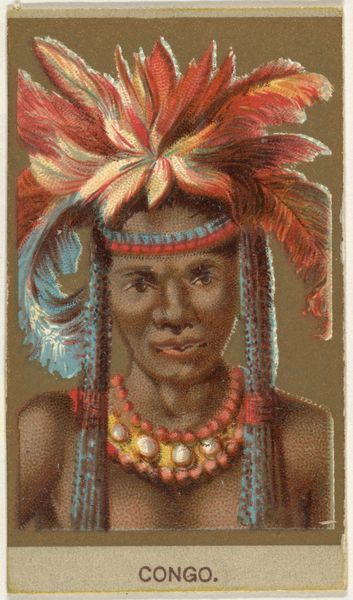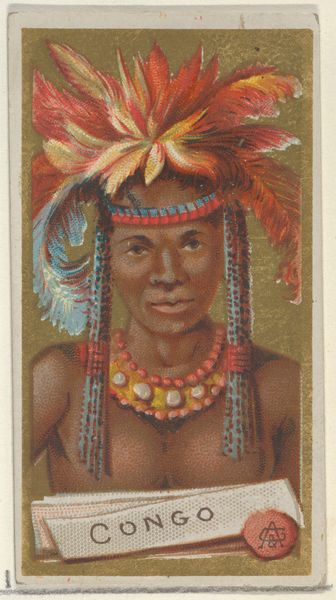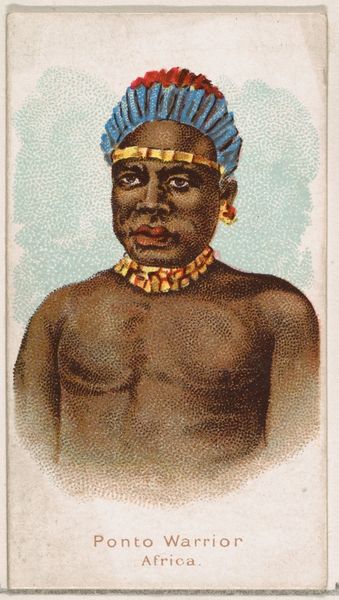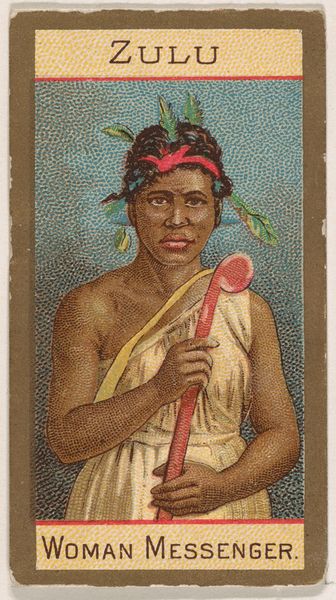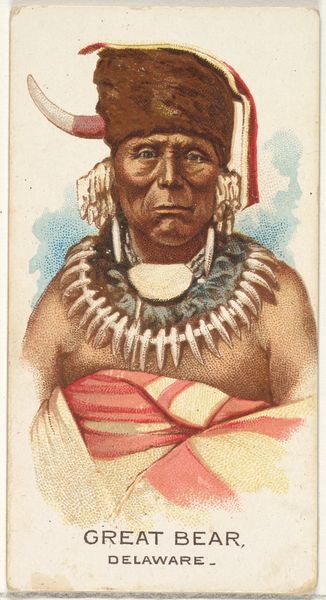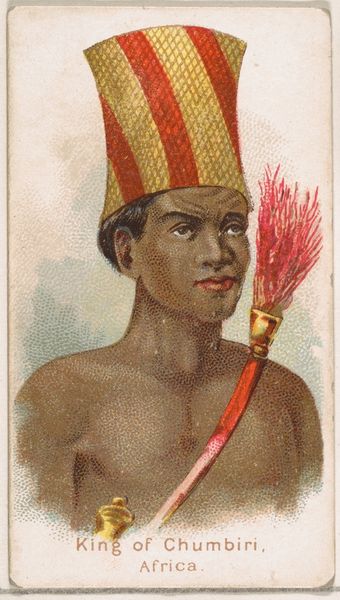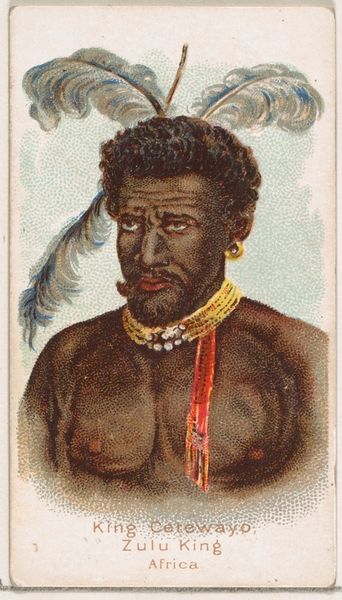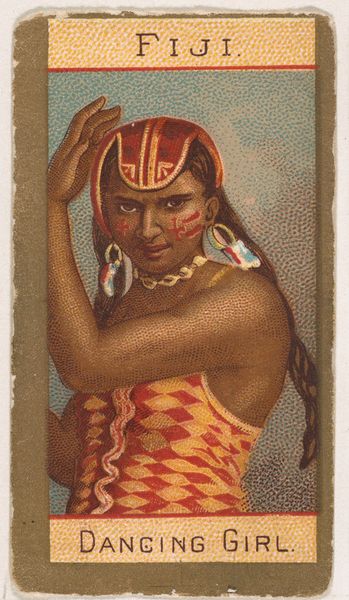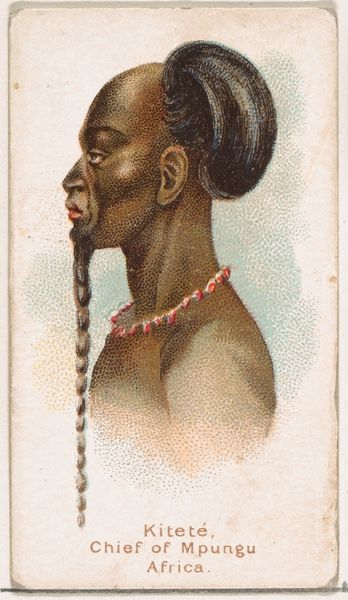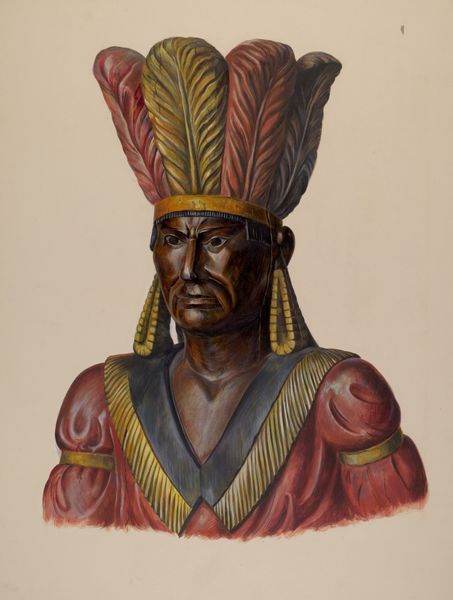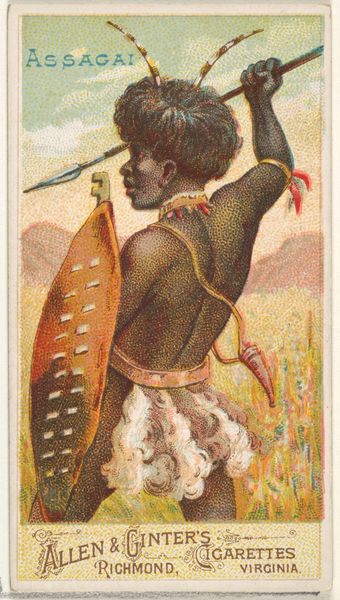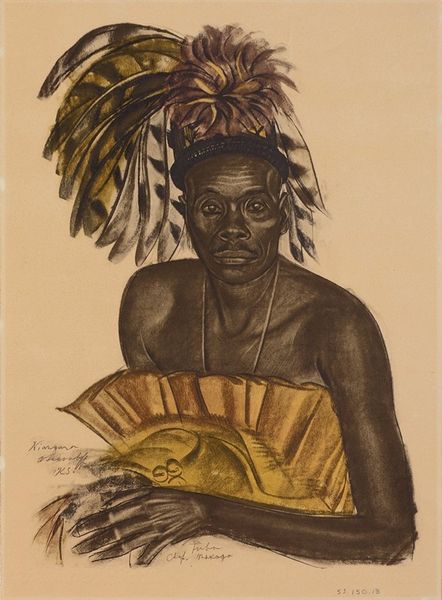
Chief of the Watuta Tribe, Africa, from the Savage and Semi-Barbarous Chiefs and Rulers series (N189) issued by Wm. S. Kimball & Co. 1888
0:00
0:00
drawing, coloured-pencil, print
#
portrait
#
african-art
#
drawing
#
coloured-pencil
# print
#
caricature
#
coloured pencil
Dimensions: Sheet: 2 11/16 × 1 1/2 in. (6.8 × 3.8 cm)
Copyright: Public Domain
Editor: So, this is "Chief of the Watuta Tribe, Africa," created in 1888 by Wm. S. Kimball & Co. It appears to be a color print. What strikes me is how…commercial it looks. It doesn't feel like a true portrait, but more like a fabricated image. What can you tell me about it? Curator: Precisely! Focus on the materials. This wasn’t made as “art” in the traditional sense, but rather as a trade card, distributed to promote tobacco. This challenges the boundary between art and mass production. Think about the labor involved – the sourcing of paper, inks, the printing process itself. Who benefited from this production? And who was potentially exploited in its creation and distribution? Editor: So it’s less about the chief himself and more about the industry behind it? Curator: Exactly. The very act of creating and distributing these images reinforces existing power structures. Consider the audience for these cards – white Americans, largely – and what this image of a “savage chief” reinforces in their minds. Editor: I hadn't thought of it that way. So the subject becomes secondary to its function as a commodity and its role in perpetuating colonial narratives. Curator: Precisely. How does its materiality -- the cheapness of the paper and the garish colours -- further inform its message and target audience? How is that different if this image was done as a formal photograph using costly platinum printing? Editor: I guess thinking about it in that light reveals a whole new layer of meaning. It’s a bit unsettling. Curator: It's meant to be! Examining the means of production exposes the social and political implications embedded within seemingly simple images. Hopefully you'll agree with that this critical engagement is beneficial to the artworld at large.
Comments
No comments
Be the first to comment and join the conversation on the ultimate creative platform.
